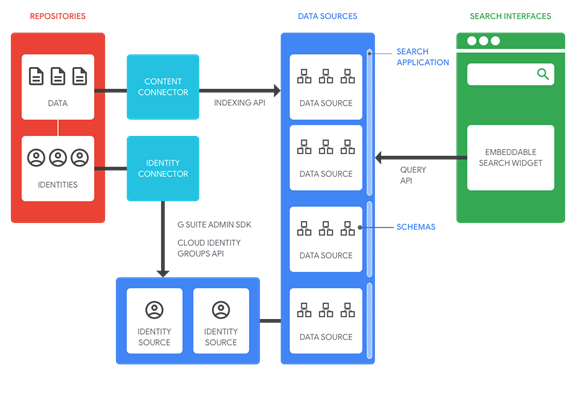Start typing – immediately get great suggestions – it’s reading my mind!Query in Natural Language – I get great results – wow, it understands what I mean!Mis-type a query on my phone – it doesn’t matter, I still get great results.Ask a question – I get direct and helpful answers.Oh, whilst you’re at it show me other relevant stuff I didn’t even ask for.
AI is at the heart of Google’s search power and similar capability can now be harnessed for our use, either baked into a search product or integrated as an API.
I see three broad approaches to search today where AI increasingly figures in the platform:
1. Traditional Search
Where it all started. You type in some words and get results back. Facets and autosuggest are common. Technically, this kind of experience typically still works the way it always has; an inverted index to match query keywords to content and ranks the results with a built-in algorithm like BM25. Some element of manual control is available to influence relevancy which can be executed well in the right hands. All search technology still works like this under the hood and many search deployments today are still at this point.
2. AI-enhanced Search:
Traditional Search but with the addition of AI in the form of machine-learning relevancy ranking using custom features, natural language processing (NLP) intent detection and content enrichment (e.g. entity extraction). May include question & answer capability. This should be the target maturity state for all new search deployments today but this level of capability in its full form is still aspirational for many organizations.
3. AI-powered Search (in the Cloud)
Automatic AI-enhanced search. Intelligent by design, only available in the Cloud and inherently based on a machine-learning approach. May add personalized results and support future use-cases automatically. Requires the minimal amount of effort to stand up a platform, AI does the rest. Ingesting the content still requires work but there are/will be accelerators to help the process. Manual control is increasingly less important. A default experience is available but still plenty of scope to customize and create your own.
Every large organization either has one or more Enterprise Search platform(s) or has tried to build one in the last two decades (with many failures). Most search we encounter, particularly legacy deployments, are of type (1). With the right expertise, it is entirely possible to do a good job of creating a Traditional Search solution in this way, delivering good user outcomes and paving the way to move to type (2) maturity.
I hear a lot of people asking about type (2) approaches and we include this as a target state in our Search Maturity Model during search strategy engagements (contact me if you want to know more about this). If you’re not aware of how AI can help enhance search on both the front end and back end check out the capabilities of NLP such as Google’s Cloud Natural Language API and specifically Google’s use of this in their use of and open-sourcing of BERT for intelligent query intent detection. This kind of power can be brought to bear in most search deployments to enrich content and make user interactions more natural.



